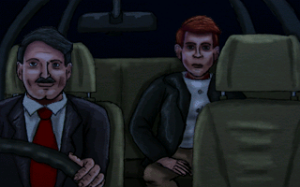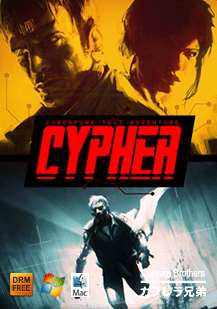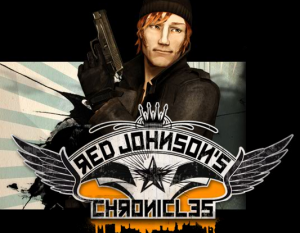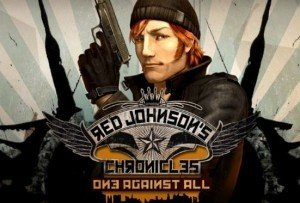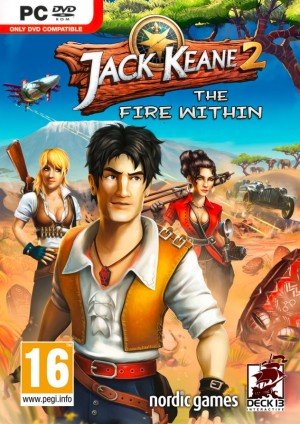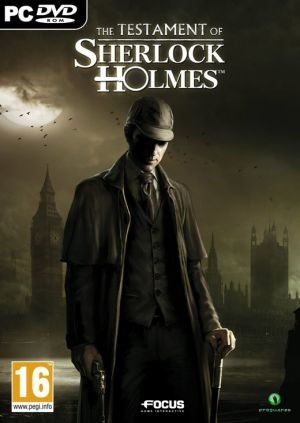Laney Berry – The St Christopher’s School Lockdown interview

As well as offering high-profile developers from the past the chance to return to their beloved genre, Kickstarter is also an opportunity for lesser-known up-and-coming indie developers to share their visions with the world. The St. Christopher's School Lockdown is one such project that's so promising that we simply needed to learn more about the game and its ambitious creator. With her in-depth, insightful answers, 27-year-old Laney Berry tells us all there is to know about her brainchild and its refreshingly unusual attempt to tell an interactive character drama inspired by true political events. If you're anything like us (and many of you obviously are), we suspect you'll be heading straight to the game's Kickstarter page after reading this interview to support an adventure with so much obvious potential.
Ingmar Böke: Hi Laney, it’s a real pleasure to welcome you here at Adventure Gamers. Please introduce yourself, and share some of your personal background, including how you got into the game industry.
 |
Laney Berry |
Laney Berry: This is practically the most exciting thing that's ever happened to me, so thank YOU for having me here. My name is Laney Berry, as you might have gathered, and I'm basically from just about all over the place. I was born in New Zealand to a Chilean mother and a British father, but I would say that if I had to claim any one nationality, it would be English (as in steak-and-kidney pudding). I graduated with a Bachelor's degree in Visual Communications from the Savannah College of Art and Design, but despite the broad focus of my artistic education, I came to the realization that my passion was, and always would be, gaming. Although I hesitate to say I'm "officially" part of the industry just yet, I am certainly attempting to throw myself into it now!
Ingmar: Since not everyone may know about your seven-part episodic adventure yet, please give us an idea of the concept behind The St. Christopher’s School Lockdown.
Laney: In a few lines, The St. Christopher’s School Lockdown is the story of a large group of teenagers, trapped in a school as a result of a political protest which gets out of hand, seen from the perspective of six different characters. In terms of game mechanics, it's a point-and-click third-person adventure game. The human universe is comprised of 273 students from an exclusive private school, plus some outsiders of interest (three of our playable characters are not actually St. Christopher’s pupils). As the game progresses, these numbers begin to dwindle due to defection, and towards the end, there are less than a hundred students left within the school. You will get to know most of them, if only in passing. Political conflict takes place within a human scale, hopefully made meaningful by the player’s investment into the characters' (playable or non-playable) lives.
The material universe is restricted to the school (there are a few exceptions, but the game is mainly played within these boundaries). The takeover starts as an expression of an organized and constructive will, but soon it becomes a bit of a wild party – these are teenagers, after all! The police, who keep their distance at the beginning, begin to respond to some violent attacks by making the living conditions harder and harder for the protesters, until they are virtually intolerable. Privileged kids, who have never missed a meal (except when on a juice detox), all of a sudden have to go for three weeks without beds, a change of clothes, food, electricity, water...
But this game is not the micro-management of a revolution. As a player, you will progress through each episode as a different character, until the last chapter, where you will select one of the six different roles you will play to make it through the emotionally-charged events at the end. You play it from the perspective of trying to help that character to find the answer to his or her uncertainties and to provide them with a safe return to their previous life, as emotionally unharmed as possible.
The St. Christopher's School Lockdown trailer
Ingmar: This game has a very strong connection to real-life events, so please tell us about the circumstances in Chile and the UK that inspired you.
Laney: I was living in Santiago, Chile when the initial wave of protests began in 2006. For those who aren't familiar, the riots started for a rather trivial reason: the government had taken away the free travel passes students used to enjoy, but at the core was a deep dissatisfaction with the chronically under-budgeted fiscal education. All manner of protests began taking place across Chile, from rallies and marches to full-on school lock-ins, which could last for days or even weeks. Now, I found the entire concept incredibly appealing in terms of its narrative potential, particularly since those making the biggest political effort in many of these instances were kids no older than fifteen or sixteen years old. Imagine a massive amount of teenagers with an entire school building to themselves, being put under heavy scrutiny by the media, the government, and the police – it was a story I just had to write.
I always envisioned shifting the setting over to the UK, due to the fact that this is where I spent most of my teenage years, and I knew I would be able to write it much more believably. So it was just sheer dumb luck (for the project, at least, not so much for the UK!) to discover around 2010 that events incredibly similar to those in Chile had begun occurring in Great Britain. Tuition fees skyrocketed, cuts were being made in the budget, and although this was mostly an issue for university students rather than grade schoolers and teens, it still led to a complete uprising of the nation's youth. More riots, more lock-ins, more rallies – and more material for my game!
These events haven't completely settled in either country, either. It continues to be a problem in Chile, to the point where several of the student "leaders" from the protests in 2006 are now household names who continue to fight for the cause, and it is still a hot topic in the UK as well. As such, I knew that if I was ever going to make this game, I had to start now, while it was still fresh and relevant.
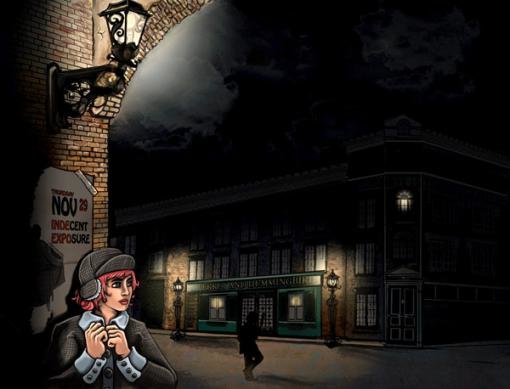
Ingmar: Obviously we’re talking about a very unusual project here, where characterization is a crucial element of the experience. How will we be able to explore these characters, and to what extent can players decide how the relationships between characters develop?
Laney: Something I really enjoyed in Heavy Rain was exploring the narrative from different perspectives. I think that while this can break the immersion and total identification with the playable character, it allows a level of engagement which is very interesting as an experience. For example, if Jayden was always an external character, in opposition to Ethan, one would come to see him as an antagonist to be defeated, which is a simplification of the way human relationships are. To know of his personal struggles makes him much more likable, as is the case when playing from Shelby and Madison’s perspectives. We are going for a similar approach. You see the world through the character’s eyes, but you don’t know all the facts about that character. You can open his/her e-mail inbox and read the messages in it, but you will not know (unless you work really hard to connect the dots) what all of these things might mean. This is not to say that your character is going to act like they have amnesia – they'll understand what they are looking at, but we feel that the player doesn't need to be spoonfed information. We want to give them just enough to let them come up with their own conclusions about these characters as human beings.
Our characters are not blank slates, ready for the player to step into their shoes and give them some inner life. We believe that it makes sense to populate our game world with people who are clearly defined in their ways and preferences, not just a couple of cute quirks. One can identify with another individual for many reasons – we all have some common experiences which unite us. We all have felt a bit (or a lot) of envy when somebody does better than us, embarrassment at the way our parents look or act, or remorse for having told a white lie. As such, we feel that what will make these characters relatable will be the fact that they ARE human, warts and all.
Player decisions will affect the human relationships on a macro and micro level. As a player in Episode Five, for example, you will gain access to sensitive information which can cause huge damage to a rather fragile character (another of the playable characters). What do you do with it? You'll know, from having played as the previous character, what impact this will have on his life, but you also realize that morally you should make that information public. Whatever you do is going to have consequences. Because the students are fenced in by the police and there is limited contact with the outside, soon there is a huge sort of internal black market going on. So administration of resources will naturally also affect your relationships, especially if you steal someone else’s last cigarette to exchange it for a favor you need from another character!
Ingmar: I would love to hear more about the game's non-linearity. How exactly do you handle branching paths and in what different ways does that occur?
Laney: Well, as for non-linearity… Have you ever played one of those table-top RPGs where the game master is far too liberal, so nothing ever happens except for some players making stupid jokes and visiting endless amounts of taverns? This is what happens without SOME narrative framing – we can't allow for complete non-linearity, in other words, or this would fall apart as a story. Our game is structured in seven chapters arranged in chronological order, and some events are inevitable (mainly those referring to the evolution of the political protest, for example: a certain policeman will always end seriously injured, the kids will always stay for precisely twenty-one days within the school, there is no way to prevent the loss of central heating towards the end, etc.). So, while there is plenty of freedom for the player to move within every given chapter and to decide which of the sub-plots to focus on, there is a narrative backbone which provides context and meaning to those choices. For a decision to have consequences, Episode Six has to be played after Episode Three. Episode Six will be different according to your previous decisions, but structurally, both chapters act as pillars of the narrative.
This is not such an open-ended sandbox that you and the other kids confined in the school could decide to, say, get together and rob a bank. Within the constraints which give meaning to the choices and make the narrative possible, the player is going to uncover the world through agency, so there is a branching path chart behind the scenes which guides the players through the different scenarios. I believe that this adds definite replay value to the game, but more than that, we want the player to build the story as an actor, not a recipient. When art and games are discussed together, very seldom do people approach the existence of agency as the true and original contribution of games to art. I believe the way the meaning of a game is constructed through player agency is by far the most distinctive feature of games as an art form. Therefore, we will make every effort to allow the player to construct his or her own personal game experience.

Six playable characters, six unique stories
Ingmar: Is your system of allowing player choices to have an impact on future episodes similar to The Walking Dead, or have you made any refinements to Telltale's decision-making model?
Laney: Yes, there are some games out there which beautifully handle the effect of a player’s decision on the game’s outcome. We are great admirers of The Walking Dead and it has inspired us a lot in solidifying some aspects which tend to be complicated for a designer. How much of your narrative authority will you surrender into the player’s hands, and at what cost? What our game has to offer, which we find interesting, is that due to the fact that the episodes are each played by different characters, the choices and their consequences will be seen through different eyes. This will showcase how certain choices, which might seem trivial to one character, can have a butterfly effect in someone else’s universe.
Having said this, the player has the right to make informed decisions which are commensurate with the consequences. Do you remember the “choose your own adventure” books, where if you took the path to the left, you met the dragon and died, while if you took the right road, you became king of the entire land? Those are not choices, those are arbitrary gambles where you are given no agency! Sometimes, in their desire to allow the player to make choices in which the outcomes are not too obvious, huge AAA games can fall into this vice. Think about – Mass Effect spoilers ahead, and I apologize – the infamous mission where one of the two characters you don’t select as a team member ends up dying. I felt so cheated by that. We also intend to try to avoid choices which are, in the end, merely cosmetic changes to an already set situation with a fixed outcome (for example, being given ten dialogue options, which in the end make no difference at all).

Ingmar: The personal situations of these characters sounds like a very complex and mature approach that we usually don’t see in games. One of them is suffering from bipolar disorder, for example. Can we get an idea of some of the inner conflicts faced by these kids, and their outlook on life and their current circumstances?
Laney: Oh, certainly, this is something which is very important to me – depicting these characters as human beings, not just puppets with an inventory and snappy one-liners. I've always been very interested in studying people, and the way their minds work: their emotional scars, their personal burdens, their humble victories, their hopes and ambitions. And that's what lies at the core of St. Chris: real people. No fantastical heroic figure with a swagger and a big smile, just teenagers. Hormonal, frustrated, desperate teenagers. But I like to think it is precisely this which makes them accessible. They aren't the characters we would LIKE to be, they are the characters we have ALREADY been. Some of us have been Shilling, a little kid with a huge imagination, living in something of a fantasy world to mask the mundanity of "real life". Some of us have been Brody, downing pain-killers to fight off a hangover while we try to remember how we ended up sleeping on the couch instead of in our bed last night. Some of us have been Hash, always the sidekick or wingman, watching as our more charismatic friend manages to somehow keep getting the beautiful girls, the achievement awards and the admiration of others.
In any case, I do want to keep an element of mystery to these characters, as a lot of the joy in terms of gameplay will be figuring each of them out as people... But we will be tackling themes such as alcoholism and drug abuse, personality disorders (beyond bipolarity, ADHD and eating disorders will be touched upon, with one other which would be too much of a spoiler to reveal at present), blackmail, physical and emotional bullying, gang violence, suicide – you know, all of that really cheery, joyful stuff. I can promise that it won't get preachy, though, and that I intend to keep things fun for the player. I want to simply present these concepts as they are, without any "lesson" lurking behind it, and without turning them into "issues", as lots of television shows based around teenagers have a knack for doing. These are just real things which happen to real people, and it's unavoidable to write about them in a game like this. We don't want to sugarcoat anything, but at the same time, I refuse to let anything get too heavy – my goal is to maintain a darkly humorous bent to the proceedings. Not quite irreverence, but, well, close. Still, if you're looking for a family friendly game, you won't find it here.
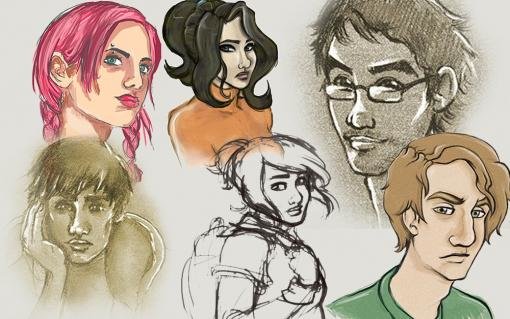
Minor character concepts, plus older versions of playable protagonists Brody and Drake in the upper left and right corners, respectively
Ingmar: What kinds of influences have helped shape this narrative approach? Is there one particular medium that had the biggest impact on your writing for this project?
Laney: When it comes to games such as this one, with branching paths and multiple endings, there is very little to draw from in terms of inspiration aside from video games, interactive fiction, tabletop roleplaying games, and Choose-Your-Own-Adventure books. So, having already discussed non-linearity to a point, now I'll focus on the more linear aspects of the narrative, in terms of the writing style, the dialogue, the tone, and my influences for all of the above.
I will most likely always bring this up before I mention any other literary inspirations: Golding's Lord of the Flies. I must have been thirteen when I first read that novel, but something about the incredibly bleak and pessimistic portrayal of human nature and its influence on the foundations of society and politics struck a chord in me. Each of his four main characters functions as a symbol to represent a larger social concept, but they retained complete believability as children. I don't feel that he ever sacrificed character development to force his point home. Others might disagree with me on that, but that's how I see it, and that's what I'm looking to do when I write St. Chris. Roger and Martin are, in fact, almost direct homages to Golding's Ralph and Jack. The name "Roger" even comes FROM Lord of the Flies, although that isn't intended to directly reflect anything about my own Roger – if you recall, Golding's Roger was a sadistic creature who enjoyed hurting small animals and inflicting pain on others. And yet, he always stood out for me as one of the more powerful characters from the novel, despite not getting as much limelight as the four leads – but that's a whole different subject.
So, we're looking at teenagers and children, confined together and left to their own devices. Throw drugs, sex, alcohol, dwindling resources and boredom into the mix, and, well, it's no wonder cabin fever begins to set in.
However, where Golding's style differs from mine is that his approach to the topic was fairly humorless (aside from some instances with Piggy and his asthma, and a few lines which might make one crack a nervous smile simply due to their horrifying implications). I can't help but look more toward titles like those written by Nick Hornby (How To Be Good, A Long Way Down, High Fidelity), or Edgar Wright and Simon Pegg's Shaun of the Dead, for instance. While I might not keep it quite as light as they do, I think you'll be able to sense the underlying influence in terms of my sense of humor. I mean, Hornby can take a plot about four brutally depressed characters who form a suicide pact, and make it laugh-out-loud funny, but touching and emotionally honest at the same time. I could only ever hope to be half as talented as he is!
Ingmar: What comes to mind when you remember your own days as a student, and how much of what you’ve seen personally made its way into the script?
Laney: To give you an idea of how much my own experiences as a student are tied to this project, I'll let you know that I had (co-creator) Alejandra (Rojas) design St. Christopher's based on photographs of the exact second-form college I attended in Egham, Strode's College.
I won't lie to you; I was a bit of a handful as a teenager. I was always looking for excitement, and even borderline dangerous situations. So while I won't go into a lot of detail, I'll say that I have seen my fair share of completely obliterated households after raging parties, I've had to call emergency services to have friends taken to the hospital with alcohol poisoning, I've even been chased by bouncers out of a strip club in Soho... In other words, I was a stupid kid who thought she was indestructible and "cool", but really I was just a pain in my parents' ass. That's the kind of angle I write from when I'm constructing my characters. They're young. They're reckless. They haven't fully figured out their own identities, so they are experimenting with life as much as they can and seeing where that takes them (spoiler: not far). For a lot of these characters, this is a coming-of-age, and the events they go through within the game will be a MAJOR reality check for them. Sometimes, the real lesson is, you just need to get over yourself and grow the hell up!
I'm sure several personal anecdotes will manage to make their way into the game. I know a few already have. Certain characters definitely have bits of my own teenage self in them, and others are based on people I knew back then, or younger versions of people I know now.
Despite the age of the characters, however, this won't be a game for kids, just like Lord of the Flies was not a book for children.
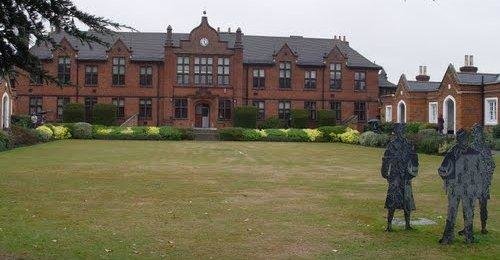
Laney's real-world alma mater, Strode's College

In-game depiction of fictional St. Christopher's
Ingmar: St. Chris has been on your mind for many years now, and I bet lots of things have changed throughout the years. Can you give us an idea of certain aspects you originally wanted to do differently before you came up with the current design?
Laney: Well, for starters, St. Christopher's was originally going to be a graphic novel, not a video game at all! As a game, this concept has gone through a ridiculous amount of revisions, too. Just for starters, Roger Spencer was going to be the ONLY playable character – now he's been relegated to an NPC. Sorry, Rog! There are characters who I had originally conceived of as major figures who have been cut out entirely, ideas for scenarios which didn't eventually fit the tone of the game, discussion on just HOW much of a glimpse the player will get into the outside world beyond the school grounds, etc. And let's not forget how many name changes this project has gone through – even now we're just at a working title, but we're still not entirely sure it's snappy enough. First world problems, huh?
Even as far as the genre itself, while I always wanted it to be an adventure game, we discussed potentially including combat, developing it as more of a visual novel (in the style of Hotel Dusk), and even, at one point, Alejandra attempted to get me to turn it into an interactive, branching graphic novel. The latter two would most certainly have been less ambitious, but I decided that, with this game, I had to go with my gut, and it's always felt like a traditional point-and-click adventure game to me, and one which would NEED the kind of complexity I am aiming for, if I wanted to do it justice.

An earlier Spanish version of St. Christopher's was tentatively titled "Molotov" for a grant application in Chile
Ingmar: Your Kickstarter campaign is strictly focusing on a public demo and the first episode for the moment (unless you reach your stretch goals). What can you tease about the particular content of Episode One?
Laney: Well, I can certainly inform you that, in Episode One, you will be thrown right into the center of the protest with very little warning! However, you will be playing as the character of Kayleigh, and she is NOT a St. Christopher's student; she doesn't know ANYBODY within the school. This is intentional – you will be playing from a fresh perspective, and will be meeting all of these characters for the first time, through her eyes. I believe this will offer a very natural introduction to the various key players within the storyline, as she is discovering everything at the same time as the player does, which would not have been the case if we'd started the series with a character such as Drake or Hash, who are already quite integrated into the various happenings.
Kayleigh is a very interesting character to me. She suffers from bipolar disorder, and as soon as we meet her, we find out she's on the run from a character only referred to as "Jono". As we progress through her episode, she takes refuge within the lock-in, and conceals her true identity from everybody, simply pretending that she's always been a St. Christopher's student. It's all very suspicious, and it's also intentionally ambiguous. I love playing with this idea of the unreliable narrator, and the relationship between the player and the playable character has always been one which I've found fascinating, in terms of the disconnect between what the player knows, and what the character knows – just look at how wonderfully that played out in Heavy Rain. We hope to do similar things in St. Chris as a whole, and Episode One is where you'll start to get a glimpse into that.
I don't want to reveal too much more, but aside from dealing with an unmedicated case of bipolar disorder, you will also need to raise quite a large sum of money in quite a short time... Why? Another of Kayleigh's secrets.
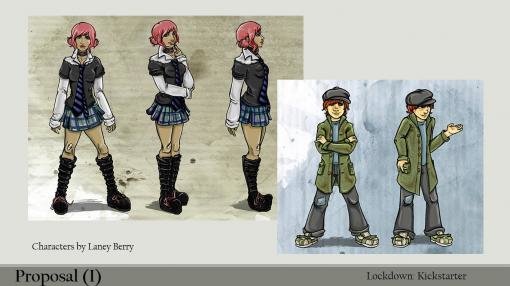
Character concepts of Kayleigh, the first playable character, and Shilling, who was inspired by Gavroche from Les Misérables
Ingmar: Apparently there will be certain roleplaying elements, including stats, reputation and a morality gauge. Can you explain how these elements work in the game? In addition, you recently told me how much you adore the Coles. Was Quest for Glory the inspiration for the roleplaying?
Laney: Can I just state for the record that Quest For Glory is my favorite game series of all time? And this is despite the fact that it's so very, very different to the kind of game I'm aiming to make – perhaps because I know that QFG did it so damn well that there's just no point in trying to emulate it!
However, oddly, I think the roleplaying aspect comes less from Quest for Glory and more from titles such as Vampire the Masquerade: Bloodlines, where things such as your skills in terms of charisma, persuasion, computer hacking skill, etc., have certain values which you can actively work toward raising, and one can't help but prioritize some over others to help fit your gaming style. Now, of course, Quest for Glory has all of this, but I find that so many of the stats in it are rather combat-focused (Strength, Stamina and Parrying, for instance) or class-centric (Lockpicking and Magic), rather than elements defining a character's personality, or skills that they can pick up later in the game.
I think statistics are highly underused in adventure games – they are an ideal way to add variety to puzzles, instead of just repetitive item-combining and unlocking doors. Let's say you're trying to get some dirt on another character. With enough points in Charisma, you could charm somebody into telling you their secrets. With a high enough value in Hacking, you could get it off of someone's private e-mail account. With Intimidation, you could simply bully them into giving it to you directly. You get the idea. Why has this always been a system reserved mostly for combat-oriented, open-world titles, when it would work just as well in a point-and-click adventure? The Coles were definitely on to something with this, and we're looking forward to experimenting with this approach.
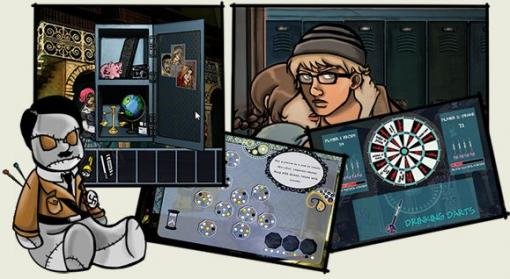
There will be a variety of different gameplay elements in St. Christopher's
Ingmar: Some of our readers might want to lynch for me saying this, but I’ve gotten pretty tired of old-school adventure game mechanics like tons of inventory puzzles, fetch quests, etc. that often distract from the story progression and ruin the immersion. St. Chris seems to be a very different case where you try to turn story AND gameplay into one organic system. How exactly do you plan to achieve this?
Laney: We've all encountered enough locked door/find-the-key puzzles in previous game experiences to get too excited when we face a new one. One way in which this game avoids these sorts of pointless quests is by sheer luck: these kids are in a survival situation where resource management comes down to its most basic level. The police have fenced the kids inside the school, so coming and going is very restricted, and when done, very difficult. Getting a fleece-lined jacket from a locker becomes much more meaningful when the electricity has been cut off and you're close to hypothermia in the middle of an icy British winter. To have to give someone a chocolate bar in exchange for a password makes much more sense if the characters have been surviving on moldy pizza leftovers for the last three days. While this is not a survival game, the local economics force a certain level of resourcefulness which demands creative solutions for very real and reasonable challenges, which become interweaved with the narrative. We learnt a lot from The Walking Dead in this respect, and while our game doesn't have the urgency of a zombie apocalypse, these kids are still trapped between a rock and a hard place.
In this game, every chapter also contains something of a mystery which needs to be solved. Mystery doesn't always have to involve the typical "Who killed Mr. Boddy?" scenario, and curiosity is not always directed at major issues. Believe me, the identity of an unfaithful husband’s lover can have people guessing for multiple seasons on a well-written soap opera (is that an oxymoron?). Fact is, as humans we need to know that which is not revealed to us. For example, we hope our player will get emotionally invested in keeping the playable character of Shilling away from child services. The poor kid has a hopelessly dysfunctional mother whom he protects with all the limited resources of a twelve-year-old, but the progression of events during the game puts him in serious risk of being sent into foster care. The player can do lots of things to influence this subplot, and this generates lots of gameplay, which becomes inseparable from the narrative.
There is, of course, also the overarching political struggle within the school, and we hope that the player will become invested enough to find that helping either Roger or Martin to achieve their goals is satisfying enough to keep pushing them forward.
And finally, let’s not forget that these are kids confined for about three weeks in a school which doesn’t even have beds, so of course they have to create their own entertainment. They play drunken darts, they have mini-battles with their collectible tradeable voodoo dolls, and later, when the electricity has been cut off, they play charades in the dark, and as a player you have to direct your flashlight at the action to see what movie or celebrity your team is trying to mimic. While the game is mature and, we hope, intense from the emotional point of view, there is still harmless fun to be had.
Ingmar: We heard about your influences as a writer before. Now I would like to know who or what has inspired your philosophy as a designer throughout the years.
Laney: When it comes to inspiration as a designer, I look for examples of people who have dealt with the same problems we are dealing with. One of them being the branching paths. You know what Roger Ebert used to say: how do you write Romeo and Juliet if one of the narrative options is that they will live happily ever after? How believable and concrete is any one plot, if in the parallel universe of your next replay, things can be totally different? How engaged and moved can one be by a plot twist which is only one item in the endless catalog of the possible? I feel that The Walking Dead and perhaps Heavy Rain, on a smaller scale, managed to deliver a moving narrative in spite of the agency given to the player. I find the way Heavy Rain did this very interesting. What causes the deeper impression in the player is the ONE fact which cannot be modified – the reveal of the murderer's identity. And I think that it is in this constraint where Heavy Rain becomes successful as a story. The same happens with The Walking Dead. One of the moments that gets firmly imprinted into one’s memory (the final scenes between Lee and Clementine) is inescapable. So, I think we need to balance freedom and constraints – it's necessary in terms of creating a strong narrative.
Another problem with narrative-driven games is how to create a meaningful story which has to be moved by actions. How do you represent inner dramatic conflicts and motives (say guilt, moral revulsion or jealousy) through movements which can be executed by a player? Imagine Hamlet as a first-person shooter! I think that The Path ventured fairly successfully into these areas. Player agency was virtually non-existent, sure, but the inner states and human drives were powerfully portrayed, and one felt they had partaken in a painful rite of passage after playing it.
Another area to look for inspiration and guidance is in the micromanagement of players’ time. You don’t want your game to be a linear, interactive movie with a couple of Quick Time Events. One method games use to keep a player busy is, of course, to put obstacles in their way. This also has the side benefit of allowing for a distribution of rewards throughout the game. So, you can’t enter the room while the guard's inside, and to get around that, you need to start a fire so he has to go out and get the fire extinguisher. Then, once you get to the room, there is a combination lock waiting for you which will take the next three hours... Or a quick visit to an online walkthrough. But this kind of puzzle can get slightly tedious after a while – not to mention, in an ideal world we would like our game to be walkthrough-proof. Puzzles shouldn't FEEL like they are just there to drag out gameplay time and give you something to do in between bits of the plot. They should feel organic.
A game series which does this very well is, my opinion, Quest for Glory (which I can't seem to shut up about). I never found myself stuck on a single puzzle that I can recall; there were always alternate solutions, or even ways to bypass the puzzles themselves. And even if you still had to deal with the puzzle? There was almost always something else you could go and do while you waited for inspiration to come. The game universes were so rich and interesting, there were so many side characters and optional quests, that one could replay it a million times and always be entertained, and you never felt forced into meaningless tasks.

Ingmar: Tell us about the distinctive art style you chose for this game.
Laney: Earlier, I mentioned being trained in Visual Communications, but I didn't state that my concentration was actually in Sequential Art; in other words, comic and graphic novel design. I think I've always wanted to tell stories, ever since I was a child, but I am also hugely into graphic art. So, as much as I adore prose and the written word, I wanted the stories I told to have a visual component as well. Eventually, this led me to game design, as you know, but my educational foundation is in comic-styled art. This is clearly very evident in the concept art you can see for our game, and also very intentional. I wanted to give you the feeling that you were interacting with a graphic novel – an approach which isn't entirely original, but yet hasn't been touched upon that much, I feel, in adventure games. Gabriel Knight: Sins of the Father had elements of it in its cut scenes, and more recently, A New Beginning took it to another level with full-on comic panels and speech bubbles... There are certainly other examples, but I digress. I just feel like it's something which would make for a very appealing and accessible aesthetic in the world of St. Chris.
Influences to my art style would mainly be comic book artists such as Chynna Clugston, Bryan Lee O'Malley, Chris Ware, Adrian Tomine, Craig Thompson and Daniel Clowes. I also have to give a shout-out to animes such as Cowboy Bebop and FLCL, both of which employ fantastic visual direction. I can't deny there's a little bit of Disney in my style, too – Alejandra complains about that once in a while, saying, "Stop turning Brody into Belle [from Beauty and the Beast]!" Alas!

Background art BEFORE being given its hand-drawn 2D comic style, a process Laney says "usually takes almost twice the time it takes (Alejandra) to get the initial render done."
Ingmar: Usually we don’t see games that deliver much of a statement on political issues. Since St. Chris contains a strong political aspect, I can imagine it’s hard to do such a game without sharing the political views of its creator. To what degree do you make clearly defined statements about issues in society, politics, etc., and do you see a certain danger of alienating people who might not agree? Or should an indie developer rather feel like “Hey, this is art, and my personal way of expressing myself, which means I should be allowed to express what I feel and to hell with people who have a problem with my views?”
Laney: This is a big question, and I will try to address it as best as I can. My political views could be best described as post-ideological. Social problems will always be around, but they become more obvious in times of recession, which is where we set the undefined present of this game. But the traditional way people used to influence the course of history (namely politics), for instance, with formal elections, voting, etc., are less clear-cut at the moment. Political parties have come to share a similar discourse, and people are venting their anger outside of the classic political arena (from the time-honored graffiti in the men's room to the more short-lived Twitter complaints).
The St. Chistopher’s School Lockdown is one case of such spontaneous expression of social unrest, and it has the fate most revolts have – to become a battleground for the opposing forces of Olympian and Dionysian actors. Rigid order vs. wild chaos. Constructive rebellion vs. unleashed rage. You have Roger Spencer, your typical old-school rebellion leader, full of hope, naivete and big words. He truly believes, at least in the beginning, that 273 students can make a world-wide difference, that their example will fuel other equally well-disciplined model students into showing their discomfort, until the Prime Minister and all other governments in the cosmos are deafened by such a quiet but commanding voice. Roger does not seem to acknowledge that he is putting together a mob of acne-ridden, hormone-driven teenagers in a confined situation where soon they will lose whatever little touch they had with rules of civilized coexistence. Under the nihilistic leadership of Martin, soon St. Christopher’s will go from the temple of democracy Roger had envisioned to some messy, trashed party venue, with blocked toilets, no electricity, and pizza boxes all over the place.
This is not a story about the official repression of some courageous juvenile revolt, which would probably have been far more epic, but a lot less tragic. This is more Lord of the Flies without the pig’s head. And that is the political view that perhaps could enrage our unsuspecting audience – this very bleak interpretation of how rebellions and revolutions typically tend to play out. Do I care that this is the case? Of course I do! I wish it wasn't. But the question is rather: can I avoid writing it this way? I think not. However, I think players will come to find that the true focus of this game is the smaller scale human drama, with the protest itself as background. I believe that the personal human element, rather than bigger concepts such as democracy, rebellion, communism, etc. is the real way we experience history.
I hope I managed to make sense!
Ingmar: You’re a huge fan of the Sex Pistols and have a fondness for punk rock. Spending a lot of time writing stories and being heavily influenced by punk rock throughout the years myself, I am very well aware how much impact punk still has on my personal writing. Would you say the same about yourself? If this is correct… where can we feel the vibe of Johnny Rotten, Dave Vanian, Joey Ramone, Stiv Bators, etc. in St. Chris? Are there certain aspects that wouldn’t be that way if it weren’t for punk? What does punk rock mean for you as lifestyle in general?
Laney: I have to share this with you, since I know you'll appreciate it – right after you'd sent over the interview questions, my father e-mailed me, the subject being "A song for your personal St. Christopher's soundtrack!", and I opened it up to find that he'd linked me to a video of The Damned's "Smash It Up". In other words, my passion for punk is just such a huge part of my personality that even my dad knows that St. Christopher's pulses to a '70s anarchistic beat. I don't think I can write without this enthusiasm toward the genre coming through in my work, just like you!
I will say outright, that the non-playable leader figure in this revolt, Roger, is, in ways, actually modeled on John "Johnny Rotten" Lydon of the Pistols. A huge amount of charisma, political ideology and rebellion, all packed into one person who is stuck in a situation which is destined to go as tragically wrong as the demise of The Sex Pistols did. And let's not forget the utter frustration Lydon must have gone through, watching the inevitable heroin-fueled implosion that was Sid Vicious, his best friend. Roger shares this sense of helplessness in a lot of ways, and Rotten's autobiography actually really helped me solidify Roger Spencer as a character in my head.
On a lesser scale, you will, of course, become witness to obvious references to the music and the icons which inspired me throughout the game. Characters all have their own individual musical tastes, which will be represented (without getting sued for copyright infringement, I hope!), and the game will actually involve the background antics of an amateur teenage garage band as such, so, yes, you will certainly pick up on punk as a thematic device!
And even in terms of visual aesthetics, I find myself drawn to the fashions and visual iconography of the '70s – this is very evident in the various character attires, my font choices, and the color schemes I find myself attracted to.
A final note on this: another musical epoch I am incredibly fond of, which is also a fairly big influence on the overall style, is the '60s British mod scene. The Who, the Kinks, the Small Faces; think scooters and anoraks over classy suits... I think I might just go and listen to Quadrophenia now...
Ingmar: Even if you tried, you probably couldn't hide the fact that you're a very artsy person. What other fields of interests in art do you have besides the ones mentioned already?
 Laney: I think the electric red hair I'm currently sporting would probably give it away, you're right on that! In any case, my artistic interests are all over the place. I'm an avid reader of fiction, a big fan of theater (and yes, I'll admit it, particularly musical theater – don't judge!), and while I have absolutely no talent for it, I appreciate poetry. I've tried my hand at singing (even had a little bit of training), and am a regular at the karaoke pub down the street. I worked with children last year, actually, helping out at an art therapy center for kids with disabilities, and we did a lot of traditional arts and crafts... I actually have a painted papier-mache sculpture I did of Max (as in Sam & Max) in my room in Chile!
Laney: I think the electric red hair I'm currently sporting would probably give it away, you're right on that! In any case, my artistic interests are all over the place. I'm an avid reader of fiction, a big fan of theater (and yes, I'll admit it, particularly musical theater – don't judge!), and while I have absolutely no talent for it, I appreciate poetry. I've tried my hand at singing (even had a little bit of training), and am a regular at the karaoke pub down the street. I worked with children last year, actually, helping out at an art therapy center for kids with disabilities, and we did a lot of traditional arts and crafts... I actually have a painted papier-mache sculpture I did of Max (as in Sam & Max) in my room in Chile!
So, I think the simplest reply is: if it's there, and it's artistic, I'm into it, and I have probably tried my hand at it.
Ingmar: I feel like we’re currently seeing a new generation of story-based games (most of them coming from indie developers) that are taking a huge step forward by delivering much more personal experiences with a new level of depth, throwing certain adventure game dogmas out the window. Aren’t projects like St. Chris, The Cat Lady or To the Moon proof that story-based games have finally started to mature? This personal aspect seems to be one of the key reasons why people feel a strong emotional response to these games.
Laney: I am in complete agreement, and I think the incredibly positive critical response to the more "big-budget" The Walking Dead (sorry, yes, I'm bringing it up again – also, does Telltale count as big-budget these days?) shows that it is exactly the right time for story-based games, with human relationships at the core.
I mean, look at a game like Cart Life. It describes itself as a management simulation, but what is it you end up managing? Custody arrangements for your daughter, your character's nicotine addiction – also, don't forget to feed your cat, or it might run away! This very personal element is one that goes surprisingly amiss in lots of adventure games. One is so busy pursuing "big" goals – saving the world from super-villains, battling starships, escaping vampires and ghouls, searching for buried treasure – that one forgets those small mundane elements which make narratives feel so real. There are the less grandiose goals we all deal with: trying to quit drinking, saving up money to pay rent, trying to resurrect a struggling relationship, visiting your sick grandmother in the hospital... It's these little human touches which help us to connect to characters and narratives, and The Walking Dead managed to seamlessly bring these sorts of issues into a game about running away from zombies! Think about the scene where Lee has to divide up the food rations between a group of cranky, starving survivors. Do you feed those who are sick? The older, more fragile characters? The children? Who "deserves" it the most? These kinds of choices are what make the player become personally involved.
And that is where games like To the Moon work so well; certainly, it's a semi-futuristic game about hopping through a dying man's memories... But what makes it work is the incredibly realistic love story. It features a very real couple who are dealing with financial difficulties, communication problems, family tragedies – all subject matter we can relate to. And that allows us to also become immersed in the more fantastical elements such as the memory-hopping technology; because its core is so honest. While it's not a choice-based game which puts you on the spot like The Walking Dead does, it's still all about the human element.
I hope to see more done with this approach in the future. One game I've been looking at closely in this regard is The Novelist – I'm expecting wonderful things from that one!

Various environments in St. Christopher's
Ingmar: Your campaign has been on Kickstarter for a while now. What has the experience been like so far, and what have you learned about what it takes for a small indie developer to successfully crowdfund a game?
Laney: It has been a huge learning experience, but also an incredibly beneficial one. I think that my favorite part has just been the fact that we are already creating a support network; we're already on people's radar. This in and of itself manages to come as a shock to me (in a good way!), as I never expected such a positive reception! It's been fantastic. At this stage, I'm trying not to get too obsessive about how the funding is going, and just keep spreading the word, keeping in touch with the community, and developing more content. It's tempting to feel a bit pessimistic when a day goes by without a single donation, but it would be silly to give up hope just due to a slow day or two. The process has its ups and downs, and you just need to hang in there and be as active in it as possible.
In a lot of ways, it's quite a bit like a political campaign... Does anyone have a baby I could kiss for a photo op?
Ingmar: What do your personal ambitions in the industry look like in the long run? Any goals you want to achieve or are you just taking things step-by-step, then wait and see what happens?
Laney: I make absolutely no assumptions for what the future may hold – I obviously have big goals and ideas, but I think the best way to keep focused (and sane!) is to live in the now. I can't get ahead of myself when I have so much on my plate as it is... Developing a game is no easy feat, as you're well aware. So I think I will just say that my post-St. Chris ambition is to keep making games, and leave it at that!
Ingmar: Again, thank you very much for doing this interview, Laney. All the best with the rest of your campaign!
Laney: Thank YOU, I'm just honored that, if you've reached this point, it means you managed to make it through my rambling responses. Back to work, then!





